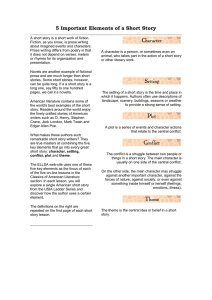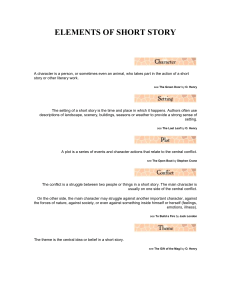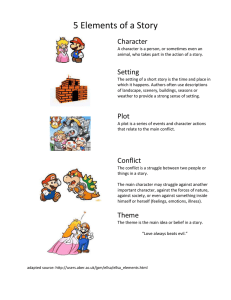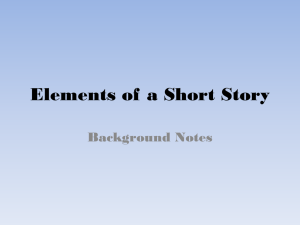5 Elements of a Short Story: Character, Setting, Plot, Conflict, Theme
advertisement
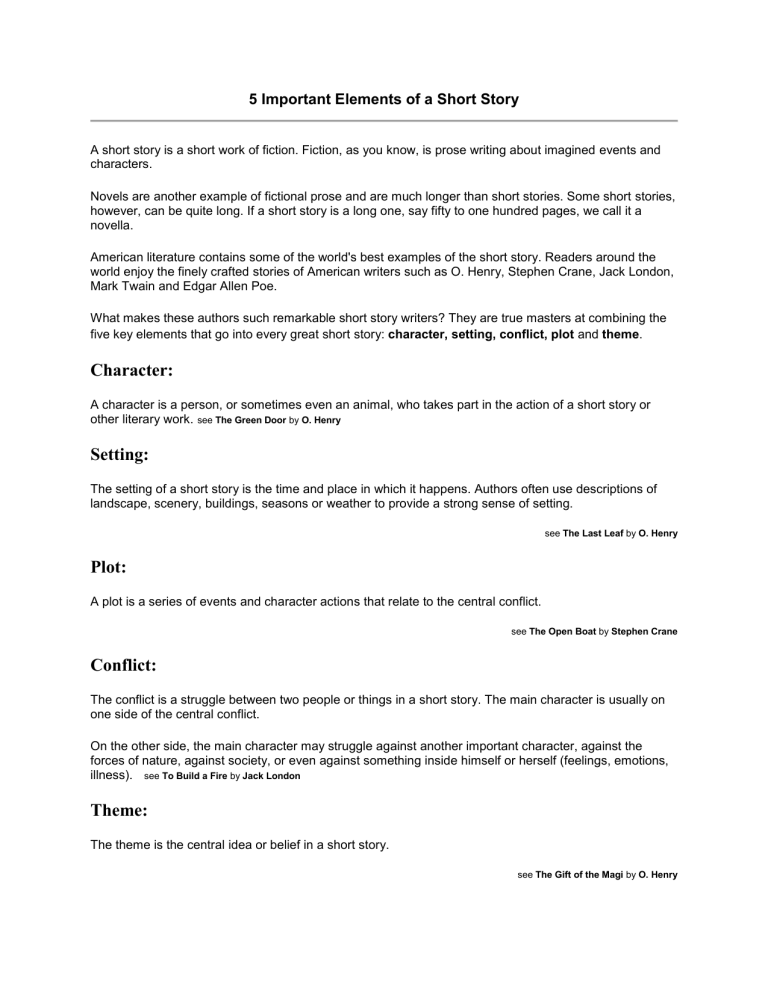
5 Important Elements of a Short Story A short story is a short work of fiction. Fiction, as you know, is prose writing about imagined events and characters. Novels are another example of fictional prose and are much longer than short stories. Some short stories, however, can be quite long. If a short story is a long one, say fifty to one hundred pages, we call it a novella. American literature contains some of the world's best examples of the short story. Readers around the world enjoy the finely crafted stories of American writers such as O. Henry, Stephen Crane, Jack London, Mark Twain and Edgar Allen Poe. What makes these authors such remarkable short story writers? They are true masters at combining the five key elements that go into every great short story: character, setting, conflict, plot and theme. Character: A character is a person, or sometimes even an animal, who takes part in the action of a short story or other literary work. see The Green Door by O. Henry Setting: The setting of a short story is the time and place in which it happens. Authors often use descriptions of landscape, scenery, buildings, seasons or weather to provide a strong sense of setting. see The Last Leaf by O. Henry Plot: A plot is a series of events and character actions that relate to the central conflict. see The Open Boat by Stephen Crane Conflict: The conflict is a struggle between two people or things in a short story. The main character is usually on one side of the central conflict. On the other side, the main character may struggle against another important character, against the forces of nature, against society, or even against something inside himself or herself (feelings, emotions, illness). see To Build a Fire by Jack London Theme: The theme is the central idea or belief in a short story. see The Gift of the Magi by O. Henry
